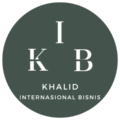Blend butter, a unique combination of traditional butter and plant-based oils, is redefining the culinary landscape with its distinct flavor, versatility, and healthier profile. Bridging the gap between indulgence and health-consciousness, blend butter offers the best of both worlds, making it a popular choice among chefs and home cooks alike. In this comprehensive article, we will dive into the wonders of blend butter, exploring its composition, benefits, and the myriad of culinary applications that have made it a cherished ingredient in kitchens around the world.
Introducing Blend Butter
Blend butter is a culinary innovation that combines the creamy richness of traditional butter with the nutritional benefits of plant-based oils. This hybrid product is carefully crafted to achieve a balanced texture and flavor, making it a versatile ingredient for various culinary applications. By blending butter with oils such as olive, canola, or sunflower, blend butter retains the familiar taste of dairy butter while reducing its saturated fat content. This unique composition provides a healthier alternative for those who love the taste of butter but are mindful of their dietary choices.
A Healthier Alternative
One of the primary advantages of blend butter is its reduced saturated fat content compared to traditional butter. Saturated fats are known to raise LDL cholesterol levels, which can increase the risk of heart disease. By incorporating plant-based oils, blend butter lowers the overall saturated fat content, making it a heart-healthier option. Additionally, many plant-based oils contain beneficial unsaturated fats, which can help improve cholesterol levels and support cardiovascular health.
Furthermore, blend butter often has a lower calorie count than pure butter, making it an attractive choice for those looking to manage their weight without sacrificing flavor. The inclusion of plant-based oils also brings in essential fatty acids and antioxidants, adding nutritional value to the product. These health benefits make blend butter a preferred option for health-conscious consumers seeking to balance taste and wellness.
Culinary Versatility of Blend Butter
Blend butter’s versatility in the kitchen is one of its most appealing features. Its creamy texture and rich flavor make it suitable for a wide range of culinary applications, from spreading on toast to cooking and baking. Blend butter can be used as a direct substitute for traditional butter in most recipes, providing the same richness with added health benefits.
In savory dishes, blend butter excels in sautéing vegetables, searing meats, and creating flavorful sauces. Its high smoke point, inherited from the plant-based oils, makes it ideal for high-heat cooking methods. For baking, blend butter contributes to moist and tender cakes, cookies, and pastries, delivering a delicious flavor profile that complements both sweet and savory recipes.
Substituting Traditional Butter with Blend Butter
Transitioning from traditional butter to blend butter in recipes is straightforward and requires minimal adjustments. Generally, blend butter can be used in a 1:1 ratio as a substitute for traditional butter. This means that one cup of blend butter can replace one cup of traditional butter, ensuring that the texture and consistency of the final dish remain consistent.
For baking, blend butter can be softened or melted, just like traditional butter, and incorporated into batters and doughs. It provides the same binding and moisture properties, resulting in baked goods with excellent texture and flavor. In cooking, blend butter can be used for sautéing, frying, and roasting, delivering a rich taste while benefiting from the nutritional advantages of plant-based oils.
Embracing Conscious Culinary Choices
The rise of conscious culinary choices has contributed to the growing popularity of blend butter. As more individuals seek to reduce their consumption of animal products and embrace sustainable and plant-based alternatives, blend butter offers an appealing option. By combining the best of both worlds—traditional butter and plant-based oils—blend butter aligns with ethical values and supports sustainable practices.
Blend butter production often involves the use of responsibly sourced ingredients, further enhancing its appeal to eco-conscious consumers. The incorporation of plant-based oils not only reduces the reliance on animal products but also promotes the use of renewable resources. This makes blend butter an attractive choice for those who prioritize environmental sustainability and ethical consumption.
Conclusion
Blend butter combines the lusciousness of traditional butter with the health benefits of plant-based oils, offering a delightful and versatile option for both cooking and baking. Its unique flavor and healthier profile have earned it a special place in the culinary world, catering to those seeking the perfect balance between taste and nutrition. As the demand for conscious culinary choices continues to grow, blend butter emerges as a delectable and responsible choice for enhancing dishes and promoting a healthier lifestyle.
By embracing blend butter, individuals can enjoy the rich taste of butter while making a positive impact on their health and the environment. Its versatility in the kitchen makes it easy to incorporate into everyday cooking and baking, allowing for delicious and nutritious meals. As the culinary landscape evolves, blend butter stands out as a testament to innovation, offering a harmonious blend of tradition and modern dietary needs.
Explore the wonders of blend butter in your culinary endeavors and discover how this unique ingredient can transform your cooking and baking experiences. Whether you’re sautéing vegetables, baking a cake, or simply spreading it on toast, blend butter provides a rich and satisfying flavor that supports a healthier and more conscious lifestyle.


